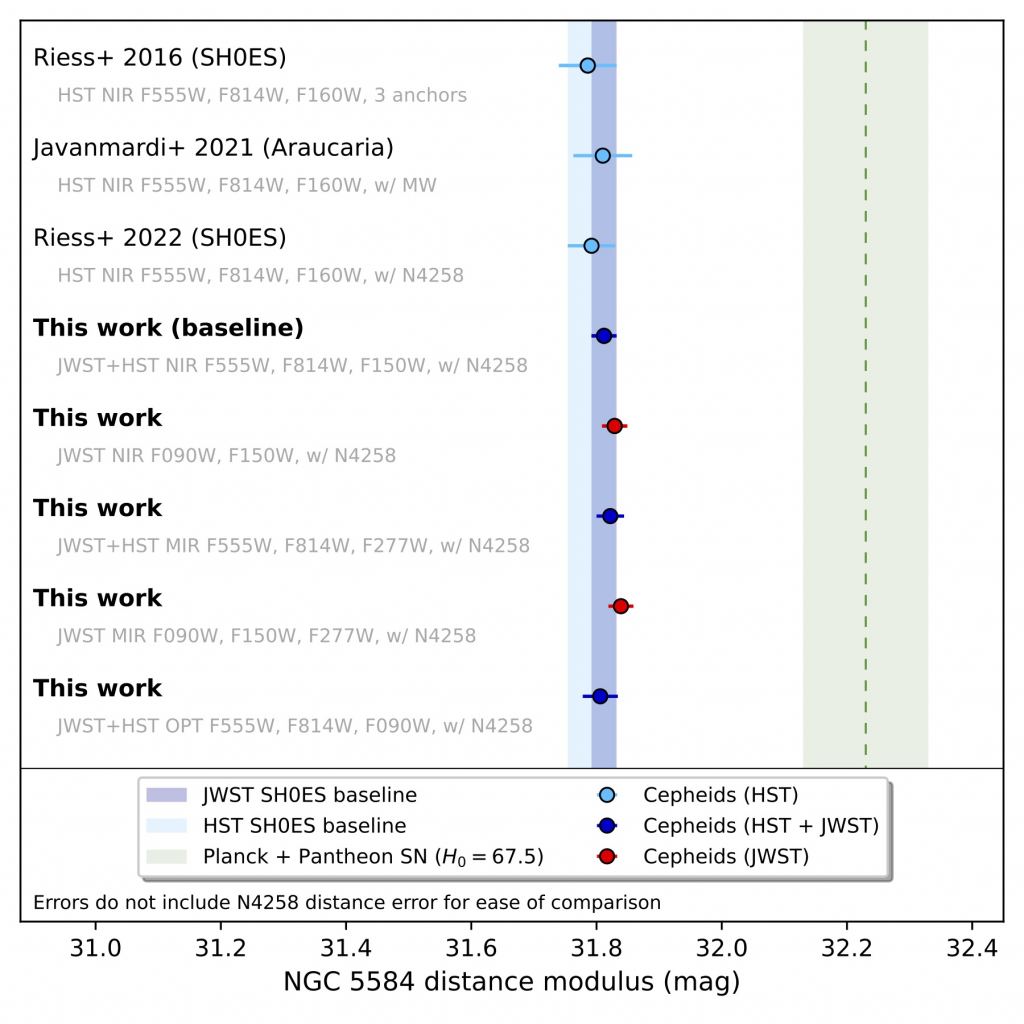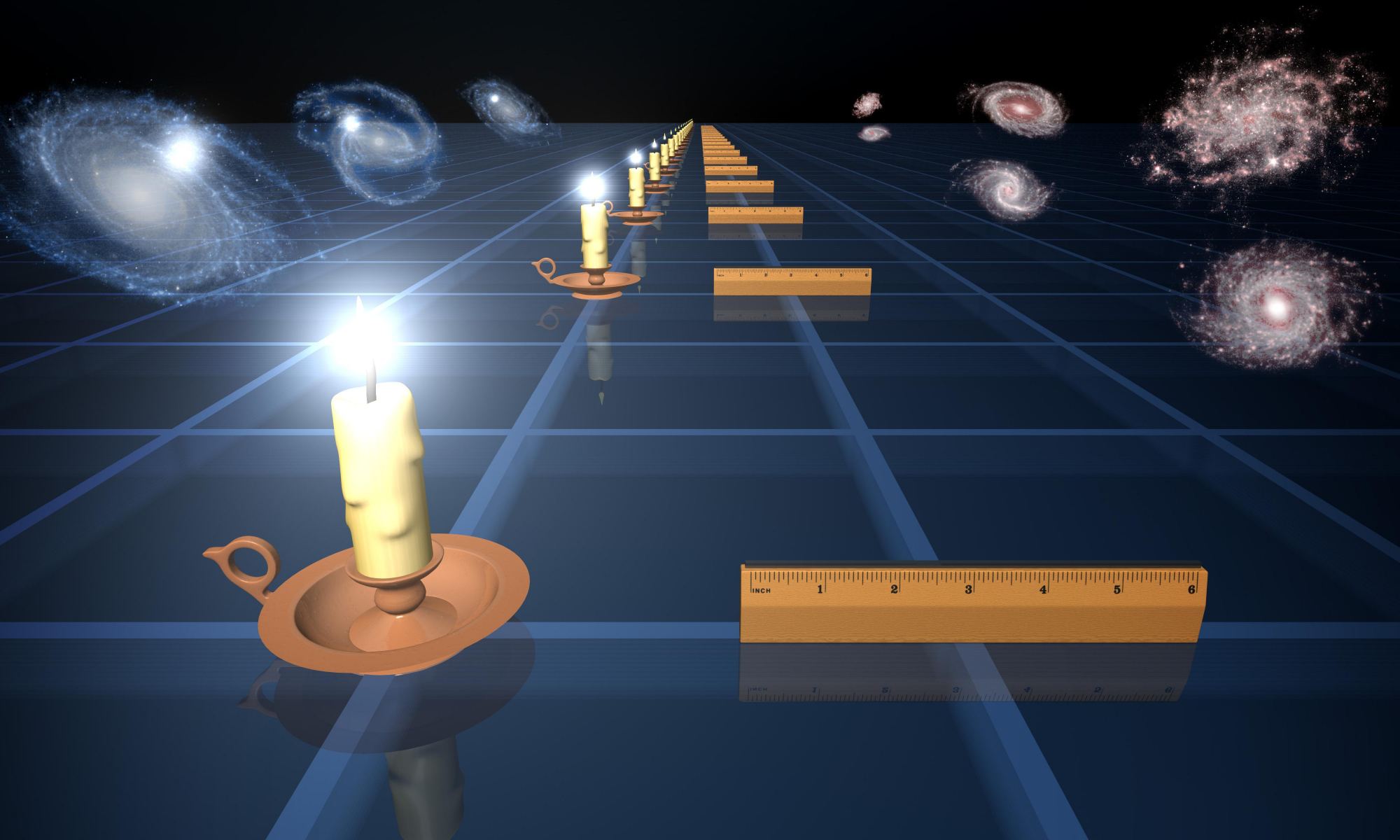You’ve just found the perfect work desk at a garage sale, and you measure it to see if it will fit in your apartment. You brought a tape measure to size it up and find it’s 180 cm. Perfect. But your friend also brought a tape measure, and they find it’s 182 cm, which would be a smidge too long. You don’t know which tape measure is right, so you have a conundrum. Astronomers also have a conundrum, and it’s known as the Hubble tension.
Astronomers have several ways to measure the size of the universe. They can look at fluctuations in the cosmic background, the wavelengths of microwave laser light emanating from around black holes, the brightness of distant supernovae, and so on. Each of these is an independent way of measuring distance. An independent ruler, if you will. It turns out they don’t all agree, and because of this, they yield different measures for the rate of cosmic expansion, known as the Hubble parameter. The values they get for the Hubble parameter are all in the same general ballpark, but not exactly the same, hence the term Hubble tension.
The results do tend to cluster into two values. Observations of the cosmic background and a few others give a value of around 67 – 68 (km/s)/Mpc. Observations of distant supernovae give a value of around 71 – 75 (km/s)/Mpc. There isn’t a clear way to resolve this tension. On the one hand, the first group of observations generally relies on fewer model assumptions, and are more direct measures of cosmic scale. On the other hand, the second measure relies on a multiple-stage process known as the cosmic distance ladder. It’s more complex but draws upon a long history of excellent astronomical measurements. This new work focuses on the second approach, specifically looking at whether our measurements of the cosmic distance ladder are biased.

Very broadly, the cosmic distance ladder uses three rungs of measurement. The first rung is parallax, where we use simple geometry to measure stellar distances, which is extremely accurate. The second rung looks at a type of variable star known as Cepheid variables. Their rate of oscillation correlates with their overall brightness. The third rung measures the apparent brightness of Type Ia supernovae, which always explode with consistent brightness. So we use parallax to measure Cepheid distances, use that to scale their pulse rate to overall brightness, then use Cepheid pulses to measure supernova distances, from which we get the actual brightness of Type Ia supernovae. Then when we see a supernova in a distant galaxy, we can use its apparent brightness to calculate galactic distance.
One proposed solution to the Hubble tension suggests that perhaps our scale for Cepheid variables is wrong. While we can measure parallax distances for lots of Cepheids, measuring brightness can be a challenge. When a Cepheid variable is near several other stars, it can be difficult to separate its brightness from the background brightness of nearby stars. It’s an effect known as crowding and could be skewing our data.
To determine whether this bias is significant, the team compared observations of Cepheids made by the Hubble Space Telescope with observations from the James Webb Space Telescope. The Hubble observations have long been the basis of the Cepheid rung of the cosmic distance ladder, but since JWST observes Cepheids at infrared wavelengths, clustering is less of a problem. The team used 560 Cepheid measures from Hubble and 325 Cepheid measures from JWST.
They found that JWST observations increased the precision of the Cepheid scale, but the overall scale was not changed. In other words, the clustering issue seen in Hubble data does not significantly bias the cosmic distance ladder. So this doesn’t resolve the Hubble tension. The new results actually make the tension slightly worse, because the Cepheid scale is now more precise.
So much for that idea. But there’s still a bit of hope. As JWST gathers observations of distant supernova, the third rung of the cosmic distance ladder can be tested to see if there’s bias there.
Reference: Riess, Adam G., et al. “Crowded No More: The Accuracy of the Hubble Constant Tested with High Resolution Observations of Cepheids by JWST.” arXiv preprint arXiv:2307.15806 (2023).


Planck’s Efstathiou, who looked at the cosmic distance ladder’s potential problems, claims the Cepheids is not the problem. So that Riess et al. looks at that in every other paper increases tension but does not resolve anything.
The potentially problematic pivot scale is 0.005 < z < 0.5 (IIRC Efstathiou's presentation). That seems to be the supernova rung ["Cosmic distance ladder", Wikipedia & Ned Wright's CosmoCalc].